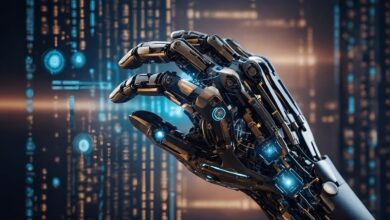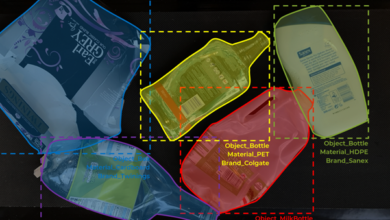Depending on who you ask, the thought of future robots tending to our children either excites (utopia!) or alarms. It’s a long established fact that children – particularly young children – need face-to-face contact to hit developmental milestones. Take global masking policies, for example, wherein school age children’s lack of face-to-face exposure led to outcry from some developmental psychologists and educators.
Put another way, there’s something importantly human (and human-to-human) about education.
On the contrary, AI has already provided the promise of helping us escape the drudgeries present in many roles. AI has enabled many workers to focus on higher order tasks, and we know educators and learning departments already have enough on their plates. Additionally, the pandemic has accelerated the need for tech reliance in education. Just try wrangling a large workforce into remote work without automation in education and messaging.
Luckily, we aren’t yet at a point where we need to assess the upsides of robo-educators. And yet AI is making its steady march into education. Let’s check out what you should expect from AI in education in 2022:
Smarter resources
Automation of resource curation saves time on a number of levels. Injection of information into workflows prevents the time and focus wasted by context switching. And aid learning developers in the selection of content to share saving time on the educator’s end.
Context switching is such a prevalent issue that it’s estimated that developers only work on a single task for 6 minutes of their time. The issue with context switching is that
Over the last few years, we’ve seen the maturation of knowledge-as-a-service providers, where knowledge means information and context. Context enables automated fact accumulation and routing of information to parties when and where they need it. Context also acts as labeled data for additional machine learning computations on top of currently deployed data.
Support routing
Customer education provides major logistical hurdles at scale. Appropriate routing of text or audio-based feedback using NLP has begun to reach the mainstream. This enables support teams to cut out “middle-man” calls and connect users to the proper resources more quickly. Put another way, “point of need” education is at work!
Support also comes in many forms, for example therapy for mental health issues. Loosely speaking, this is education – or lessons from mental health use can be applied to education, particularly efforts that are attached to behavior change. While many therapists believe that AI should play no role in mental health, almost half of Americans who need mental health services don’t get the help they need. This same argument of promoting access can be applied to educational topics.
Microlearning
Microlearning is elearning content and delivery built for ease of consumption and integration “into the flow of work.” Microlearning has emerged as a godsend for many organizations navigating ambiguities of late-pandemic work life. Heard of Zoom fatigue? The same applies to “traditional” e-learning delivery methods and form factors. While the average learning management system requires 7 clicks to reach learning content (or, even worse, a video lecture shares the most actionable points an hour into a recording), microlearning presents only the information that is needed at the point of need.
One of the primary benefits of microlearning is its applicability for education at scale. This also makes it a great “fit” for augmentation with machine learning and AI. Promising avenues for AI exposure within microlearning include automation of grading course responses, inclusion of machine curated resources, deliverability gains in email and SMS, and course generation (AI-enabled video editing, image cropping, and language generation).
AI and the Economics of Education
From a worker, managerial, organizational, or societal perspective, skilling, upskilling, and reskilling have dramatic economic ramifications. This statement applies both to those who are educating and those who are educated.
From a learner perspective, time, attention, and access to education are three of the largest economic inputs. Incidentally, all three are affected by form factor and design choices of services that enabled education. Does learning come directly to learners? Is content pre-curated? What happens when a learner doesn’t understand?
AI is finding ways to help with all of the above uses, from discerning what curriculum is effective, to injecting it into workflows when needed, to grading answers.
From a manager, educator, organizational, or even societal perspective, challenges in upskilling, churn, and underemployment in in-demand skill sets are titans of economic change. Without wider access to effective upskilling, G-20 economics are projected to lose over $11T dollars in the next decade. On a more localized level, the cost to hire new employees in highly-skilled professions can jump to $50,000 or above. The need to up and re-skill has been shown to reduce churn and prevent improve employee belonging.
Conclusion
As with many verticals, recent advances in NLP and machine learning are just beginning to find applications in education much beyond alpha. However, innovative applications of tech developed for business comms and market intelligence are finding reusability in a range of educational settings. In 2022, we’ll see AI push personalized education at scale through a variety of applications including microlearning, point of need learning, and resource curation.






